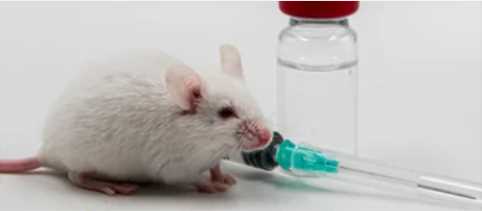For an individual animal, non-self genetic components belong to foreign genes. If the foreign genes are integrated or introduced into animal chromosomal genes, then the foreign genes are called transgenes. This animal is called transgenic animals. Transgenic animals use biotechnology to stably change the genetic characteristics of animals. The phenotype of transgenic animals is changed including the performance in growth and the disease resistance. At present, transgenic animals have become an important field in agricultural and medical research.

In the field of agriculture, the production and quality of poultry animals can be improved through the breeding of genetic animals. Traditional improved breeding takes natural mutation as the prerequisite for selection, and the probability of natural mutation in nature is quite low. Transgenic technology can overcome the above-mentioned problems. For example, people can create new mutations or break the restriction of gene communication between different species. Through transgenic animals breeding, the process of animal improvement will speed up. Then we can see that the growth rate of individual animals is increased, the quality of production is improved, and the ability to resist diseases is enhanced.
Firstly, transgenic animals have important application value in the research of human genetic diseases. The human genetic disease model produced by transgenic technology is an extremely effective way for the research of human genetic disease. For example, the establishment of transgenic animal models for various diseases such as atherosclerosis and anemia provides convenience for the research of such diseases. Secondly, the scarcity of organ sources is the biggest problem in organ transplantation in clinical medicine. Xenotransplantation provides a feasible solution. Transgenic technology is mainly aimed at the problems related to hyperacute rejection in xenotransplantation. Transgenic technology can interfere with donor genes through genetic modification and other measures to reduce hyperacute rejection after organ transplantation.
The specific breeding process of transgenic animals breeding is as follows. The main difference from transgenic plants is that the recipient cell is an fertilized egg. The fertilized egg can develop from a cell into a complete individual through self-replication and proliferation, while ensuring that the target gene exists in every cell of the individual. htDNA-chip® technology platform is mainly used in the two aspects of the process of transgenic animal breeding including the target gene screening and the result identification.
 Fig.1 Transgenic animals cultivation process
Fig.1 Transgenic animals cultivation process
Our silicon-based high-throughput htDNA-chip® platform can custom the DNA library to facilitate your screening of the target gene. Both the built-in libraries and customized libraries can greatly meet the screening requirements of the target gene you need. The rapid preparation of DNA library can greatly improve the efficiency of target gene screening and further promote the breeding process of transgenic animals.
Simply introducing the target gene does not mean that the breeding of the transgenic animal is successful. Because it needs to confirm that the target gene is indeed fused into the animal's genome. Therefore, through the high-throughput next-generation sequencing technology of htDNA-chip®, gene sequencing can be completed efficiently. Basing on htDNA-chip®, you can determine whether the genetic animals are successfully cultivated. Through htDNA-chip® technology platform, the breeding process can be greatly promoted.
All services are available on a 24/7/365 basis. If you are interested in CD BioSciences' htDNA-chip® platform, please contact us.